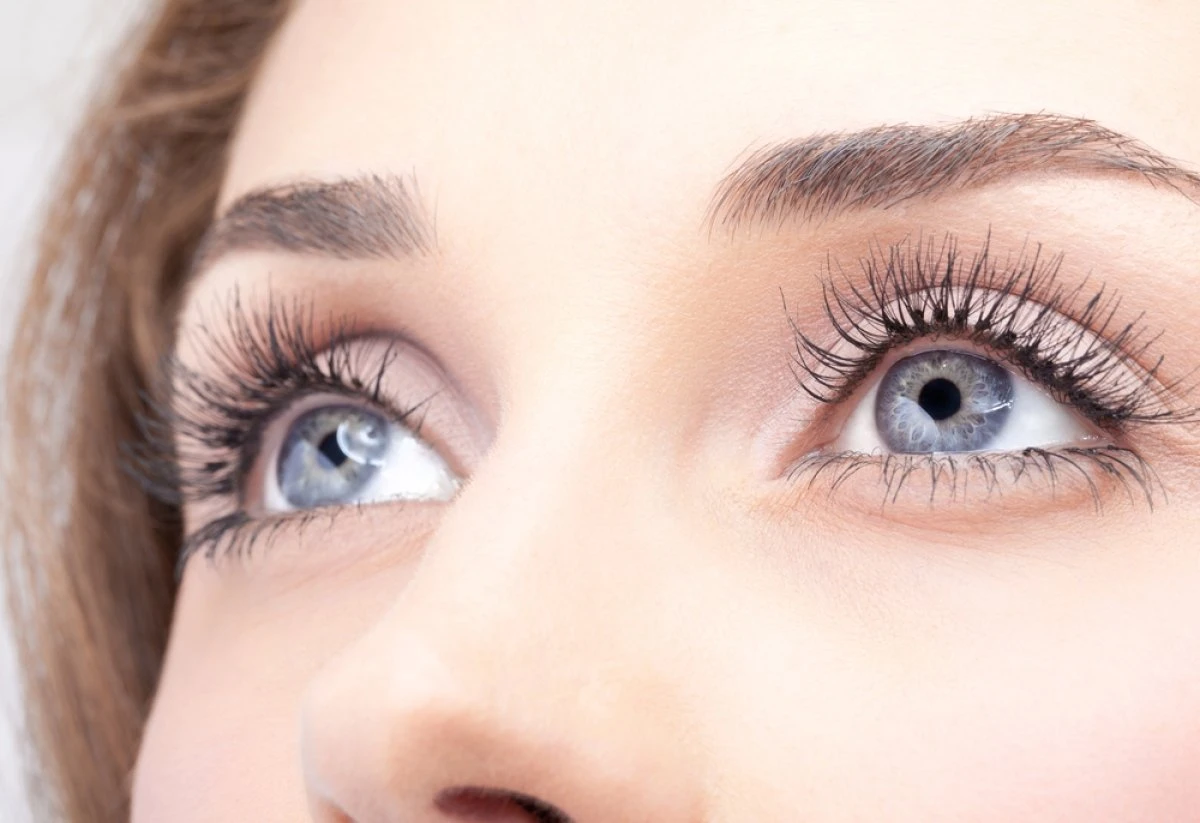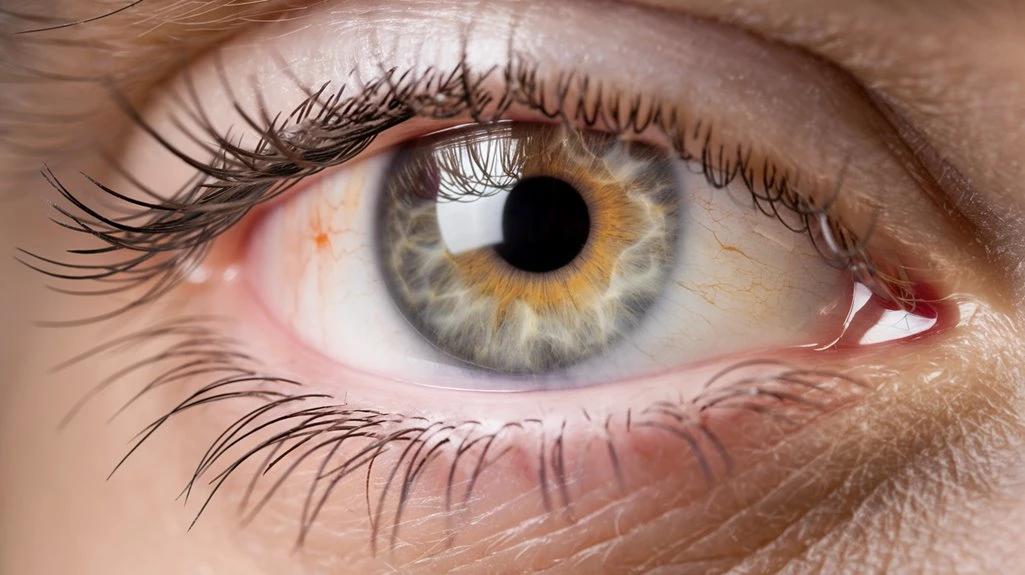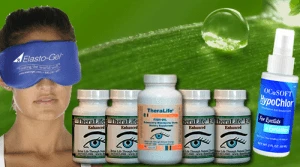Blepharitis, an inflammatory condition of the eyelids, can lead to vision problems such as blurred vision, glare, and difficulty focusing due to tear film instability and meibomian gland dysfunction. Symptoms include redness, irritation, and crusting. If not managed, it may result in corneal damage and eyelid deformities. Proper eyelid hygiene and effective treatments are essential for mitigating these issues and improving visual comfort.
TheraLife’s products offer significant benefits for individuals dealing with blepharitis and related eye conditions. Their comprehensive range of natural, clinically proven supplements targets the underlying causes of dry eyes and promotes overall eye health. TheraLife’s solutions, including their Eye Enhanced formula, focus on reducing inflammation and enhancing tear production, thereby alleviating symptoms and improving visual clarity. By integrating these products into a daily regimen, customers can experience relief from blepharitis symptoms and prevent further complications. TheraLife stands out by offering safe, effective, and natural alternatives for managing blepharitis and promoting long-term eye health.
Best Blepharitis Treatment From TheraLife- When Drops Don’t Work.
Key Takeaways
- Blepharitis can cause visual disturbances including blurriness, glare, and difficulty focusing due to tear film instability.
- Chronic blepharitis may lead to persistent or fluctuating visual disturbances affecting daily activities.
- Inflammation from blepharitis can increase the risk of corneal damage, impacting vision.
- Effective management of blepharitis is crucial to prevent complications such as eyelid scarring and vision impairment.
- Symptoms like eye irritation and fatigue can necessitate lifestyle adjustments, affecting tasks like reading and driving.
Understanding Blepharitis and Its Causes
Blepharitis is a common ocular condition characterized by inflammation of the eyelid margins. Understanding its causes is vital to managing this persistent issue.
Blepharitis triggers can include bacterial infections, seborrheic dermatitis, and rosacea. These elements contribute to the dysfunction of the meibomian glands, essential for tear film stability.
Risk factors for developing blepharitis encompass poor eyelid hygiene, excessive oil production, and environmental factors like dust or smoke exposure. Additionally, chronic conditions such as diabetes or skin disorders can exacerbate the risk. It is important to note that meibomian gland dysfunction often plays a significant role in the development and persistence of blepharitis, leading to dry eyes and further irritating the condition.
Common Symptoms Associated With Blepharitis
While blepharitis can be a persistent condition, recognizing its common symptoms is essential for effective management.
These symptoms often have an overlap with other ocular conditions, leading to treatment misconceptions. Understanding these nuances is vital for targeting the underlying causes of discomfort.
- Redness and Irritation: Inflammation causes the eyelids to appear red, leading to discomfort.
- Crusting Around Eyelids: Accumulated debris can form crusts, particularly noticeable upon waking.
- Gritty Sensation: Many experience a sensation akin to having sand in the eyes, often exacerbated by blinking.
- Fluctuating Vision Clarity: Though not directly a vision problem, it contributes to the confusion in symptom overlap.
Accurate identification of these symptoms can prevent misdiagnosis and enhance treatment efficacy, ensuring you address blepharitis effectively. To manage this condition more effectively, maintaining eyelid hygiene is crucial as it helps prevent bacterial growth.
How Blepharitis Can Impact Your Vision
Although often underestimated, blepharitis can greatly impact your vision by indirectly altering the ocular surface environment.
Blepharitis triggers, such as bacterial infections or skin conditions, can lead to inflammation of the eyelids. This inflammation affects the tear film’s stability, vital for clear vision. When the tear film becomes unstable, it results in dry eye symptoms and visual disturbances like blurriness, glare, or difficulty focusing. The compromised tear film can cause light to scatter improperly on the retina, impairing visual acuity. Additionally, the chronic nature of blepharitis means these visual disturbances may persist or fluctuate, disrupting daily activities. Proper eye hygiene practices are crucial in managing blepharitis and preventing further visual disturbances.
Addressing blepharitis triggers through proper management is essential to maintaining ideal ocular health and minimizing its impact on your vision.
Potential Complications Related to Blepharitis
Even though blepharitis is often considered a minor condition, its potential complications can considerably impact ocular health. Chronic inflammation can lead to several blepharitis complications that warrant attention.
Left unmanaged, blepharitis can cause the following issues:
- Meibomian Gland Dysfunction: Chronic inflammation disrupts oil secretion, leading to dry eye syndrome.
- Corneal Damage: Persistent irritation and eyelid swelling can cause corneal abrasions or ulcers, impacting vision.
- Conjunctivitis: Inflammation from blepharitis can spread, resulting in bacterial or viral conjunctivitis.
- Eyelid Scarring: Long-term inflammation may cause scarring, potentially leading to misdirected eyelashes or eyelid deformities.
Blepharitis can also lead to significant discomfort and excessive tear production, which are common symptoms associated with the condition.
These complications highlight the importance of managing blepharitis effectively.
Early intervention and adherence to treatment are vital to prevent these adverse outcomes. Always consult an eye care professional for tailored advice and management strategies.
Diagnosing Blepharitis and Assessing Vision Impact
When diagnosing blepharitis, you’ll need to recognize key symptoms such as eyelid redness, swelling, and crusting, which are critical for accurate identification. Thorough vision testing procedures, including visual acuity tests and slit-lamp examinations, help assess any impact on vision clarity. Understanding how these symptoms affect daily activities, such as reading or driving, is essential for evaluating the condition’s overall impact on quality of life. Blepharitis can disrupt daily life and impact eye health, making treatment and management crucial.
Identifying Blepharitis Symptoms
How does one recognize the onset of blepharitis, and what impact could it have on vision?
Blepharitis primarily manifests as eyelid inflammation, characterized by redness, itching, and swelling around the eyelids. A common indicator is crusted eyelashes, where debris accumulates at the eyelid margin, particularly upon waking.
This disorder can lead to visual disturbances due to tear film instability, causing blurred vision. Regular eye check-ups are essential for detecting early signs of dry eye syndrome and monitoring overall eye health, which can prevent the progression of blepharitis-related vision problems.
Key symptoms to watch for include:
- Eyelid inflammation: Redness and swelling of the eyelids.
- Crusted eyelashes: Flakes or debris on eyelashes, especially noticeable in the morning.
- Itching and irritation: Persistent itchiness and a gritty feeling in the eyes.
- Blurred vision: Temporary vision impairment due to irregular tear film distribution.
Recognizing these symptoms early is vital for managing blepharitis and mitigating potential vision issues.
Vision Testing Procedures
To effectively diagnose blepharitis and assess its impact on your vision, ophthalmologists employ a series of vision testing procedures. A detailed vision assessment typically begins with a thorough examination of your eyelids and tear film using a slit lamp. This instrument allows for magnified visualization, aiding in identifying inflammation or debris indicative of blepharitis. Visual acuity tests follow, where you’ll read from an eye chart to determine clarity and sharpness of vision. These tests help assess whether blepharitis has affected your visual acuity by altering tear film quality and stability. Additional procedures might include tear break-up time tests and meibography to evaluate tear production and meibomian gland function, providing a complete understanding of how blepharitis impacts your overall ocular health. Regular eye care professional evaluations enhance treatment outcomes and validate the benefits of consistent eyelid cleaning.
Impact on Daily Activities
Despite its often underestimated nature, blepharitis can greatly affect daily activities by altering visual function and comfort. This chronic inflammation of the eyelids can impair your ability to perform tasks requiring clear vision. Symptoms like blurred vision and eye irritation may necessitate lifestyle adjustments. You might find yourself needing frequent breaks during activities such as reading or using digital devices.
- Visual strain: Constant irritation can lead to eye fatigue, impacting daily routines like driving.
- Increased blinking: This reflex can disrupt focus during work or leisure activities.
- Sensitivity to light: Bright environments may become uncomfortable, requiring protective eyewear.
- Difficulty with contact lenses: Wearing lenses might be challenging due to discomfort and dryness.
Understanding these impacts can help you adapt daily routines to maintain productivity and comfort. In some cases, blepharitis can cause conjunctival irritation that exacerbates symptoms such as burning sensations and redness, further impacting visual comfort.
Effective Management and Treatment Strategies
To manage blepharitis effectively, applying warm compresses can enhance meibomian gland function by liquefying hardened secretions, which reduces inflammation and improves tear film stability. You’ll find that maintaining proper eyelid hygiene is essential; this involves regular cleansing with a mild, non-irritating solution to remove debris and bacterial buildup, thereby decreasing chronic irritation. Clinical studies support these strategies, showing significant improvements in patient symptoms and overall ocular health. Additionally, omega-3 fatty acids offer anti-inflammatory benefits, which can further assist in symptom improvement and management of blepharitis.
Warm Compress Benefits
Although blepharitis can be a persistent and uncomfortable condition, incorporating warm compresses into your treatment strategy can greatly alleviate symptoms and promote healing.
Heat application serves as an effective method to soften eyelid crusts, thereby facilitating their removal. By employing proper warm compress techniques, you’ll find that the heat enhances blood circulation around the eyelid area, reducing inflammation and irritation. Additionally, it aids in unclogging the meibomian glands, which are often obstructed in blepharitis cases, consequently improving the secretion of necessary oils.
To maximize the benefits of warm compresses, consider the following:
- Use a clean, warm washcloth: Make sure it’s not too hot to avoid burns.
- Apply compresses twice daily: Consistency is key.
- Maintain heat application for 5-10 minutes.
- Follow with gentle eyelid massage: Promotes further gland secretion.
For effective management, consider using hypochlorous acid solutions which have proven efficacy against microbial agents contributing to blepharitis.
Proper Eyelid Hygiene
Maintaining proper eyelid hygiene forms an essential part of managing and treating blepharitis effectively. Implementing meticulous eyelid care can greatly mitigate symptoms and prevent further complications.
Start by gently cleansing your eyelids with a warm, damp cloth, applying light pressure to remove debris and crusts. Incorporate commercial eyelid cleansers or diluted baby shampoo as part of your hygiene practices, ensuring they’re specifically designed for sensitive ocular areas.
These agents help eliminate bacteria and reduce inflammation, vital for alleviating blepharitis symptoms. Regular eyelid massage can aid in expressing clogged meibomian glands, enhancing oil secretion and tear film stability.
Adopting these evidence-based hygiene practices consistently can play a transformative role in maintaining eyelid health and minimizing the risk of vision problems associated with blepharitis.
Best Blepharitis Treatment From TheraLife- When Drops Don’t Work.
Frequently Asked Questions
Can Lifestyle Changes Help Prevent Blepharitis?
Yes, lifestyle changes can help prevent blepharitis. Implementing proper hygiene practices, like regular eyelid cleaning with a mild cleanser, can reduce bacterial buildup.
Stress management is essential as stress can exacerbate symptoms. Studies show that reducing stress through mindfulness or exercise lowers inflammation, potentially preventing flare-ups.
Regularly replacing eye makeup and avoiding irritants also play a role. Adhering to these practices can greatly mitigate the risk of developing blepharitis.
Are There Any Natural Remedies for Blepharitis?
You might doubt natural remedies’ effectiveness for blepharitis, but evidence suggests they can help.
Warm compresses increase blood flow, loosen crusts, and unclog glands, reducing inflammation.
Essential oils like tea tree oil, known for antimicrobial properties, may mitigate symptoms when used with caution. Confirm proper dilution and consult with a healthcare professional before use.
These methods offer a complementary approach, enhancing conventional treatments while addressing your concerns about chemical exposure.
Is Blepharitis Contagious?
Blepharitis itself isn’t contagious, but certain factors related to it can contribute to contagious conditions. The condition usually stems from bacteria or skin conditions like dandruff.
While blepharitis transmission doesn’t occur directly, sharing personal items like towels can transfer bacteria, possibly leading to infections. Maintaining good hygiene is essential.
Studies indicate that managing underlying causes and avoiding shared items can reduce risks associated with blepharitis-related infections. Always consult your healthcare provider for tailored advice.
How Long Does a Typical Blepharitis Flare-Up Last?
When you’re dealing with blepharitis, the duration of a typical flare-up can vary, usually lasting from a few days to about two weeks.
Flare-up triggers such as poor eyelid hygiene, exposure to irritants, or underlying skin conditions can lengthen this period.
Evidence-based studies suggest maintaining a regular eyelid cleansing routine and avoiding known irritants help in reducing flare-up duration.
Persistent symptoms may require medical intervention to manage effectively.
Can Diet Influence Blepharitis Symptoms?
You might wonder if diet influences blepharitis symptoms, and indeed, dietary adjustments can have a nutritional impact on managing them.
Omega-3 fatty acids, found in fish and flaxseeds, are known to reduce inflammation, potentially easing symptoms. Limiting processed foods and sugar might also help, as they can exacerbate inflammation.
Research suggests that a balanced diet, rich in antioxidants and vitamins, supports overall eye health, potentially alleviating blepharitis symptoms.
Best Blepharitis Treatment From TheraLife- When Drops Don’t Work.
Conclusion
If you’re dealing with blepharitis, you might be concerned about its impact on your vision. Rest assured, while blepharitis can cause discomfort and inflammation in your eyelids, it seldom leads to severe vision issues. Managing it with regular eyelid hygiene is key, and TheraLife’s products can be a great ally in this journey. TheraLife offers a range of natural solutions designed to address the root causes of blepharitis, helping to soothe inflammation and maintain eye health. Their comprehensive approach not only alleviates symptoms but also supports overall eye wellness, reducing the likelihood of complications. So, whilst blepharitis might be more of an annoyance than a serious threat, with TheraLife’s help, you can keep it under control and focus on maintaining clear and comfortable vision.
References
- 1.
- Putnam CM. Diagnosis and management of blepharitis: an optometrist’s perspective. Clin Optom (Auckl). 2016;8:71-78. [PMC free article] [PubMed]
- 2.
- Huggins AB, Carrasco JR, Eagle RC. MEN 2B masquerading as chronic blepharitis and euryblepharon. Orbit. 2019 Dec;38(6):514-518. [PubMed]
- 3.
- Dietrich-Ntoukas T. [Chronic Blepharitis]. Klin Monbl Augenheilkd. 2022 Nov;239(11):1381-1393. [PubMed]
- 4.
- Rodriguez-Garcia A, Loya-Garcia D, Hernandez-Quintela E, Navas A. Risk factors for ocular surface damage in Mexican patients with dry eye disease: a population-based study. Clin Ophthalmol. 2019;13:53-62. [PMC free article] [PubMed]
- 5.
- Choi FD, Juhasz MLW, Atanaskova Mesinkovska N. Topical ketoconazole: a systematic review of current dermatological applications and future developments. J Dermatolog Treat. 2019 Dec;30(8):760-771. [PubMed]
- 6.
- Tavassoli S, Wong N, Chan E. Ocular manifestations of rosacea: A clinical review. Clin Exp Ophthalmol. 2021 Mar;49(2):104-117. [PubMed]
- 7.
- Lin A, Ahmad S, Amescua G, Cheung AY, Choi DS, Jhanji V, Mian SI, Rhee MK, Viriya ET, Mah FS, Varu DM., American Academy of Ophthalmology Preferred Practice Pattern Cornea/External Disease Panel. Blepharitis Preferred Practice Pattern®. Ophthalmology. 2024 Apr;131(4):P50-P86. [PubMed]
- 8.
- Ozkan J, Willcox MD. The Ocular Microbiome: Molecular Characterisation of a Unique and Low Microbial Environment. Curr Eye Res. 2019 Jul;44(7):685-694. [PubMed]
- 9.
- Khoo P, Ooi KG, Watson S. Effectiveness of pharmaceutical interventions for meibomian gland dysfunction: An evidence-based review of clinical trials. Clin Exp Ophthalmol. 2019 Jul;47(5):658-668. [PubMed]
- 10.
- Soh Qin R, Tong Hak Tien L. Healthcare delivery in meibomian gland dysfunction and blepharitis. Ocul Surf. 2019 Apr;17(2):176-178. [PubMed]





